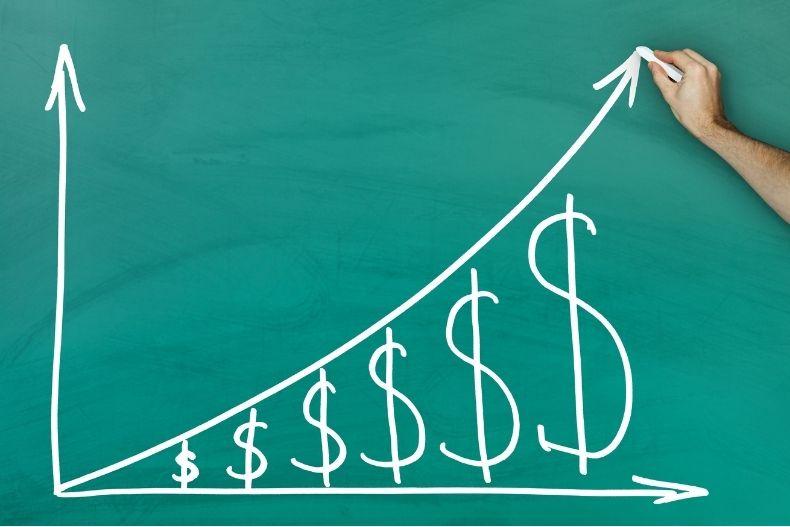The next time you consider buying and selling stocks for the sole purpose of earning a dividend, keep the strategies of Jeff Zananiri in mind.
Investing in dividends is a proven method of building wealth that protects against inflation in a way that bonds cannot. However, finding the best dividend-paying company can be challenging.
Investing in dividends is a reliable method of building wealth, providing bonds to protect against inflation.
The company must overstate the cash flow required to support a dividend payment plan.
In addition to studying the fundamentals of specific companies, investors must also be familiar with a wide range of industry trends to ensure that the chosen business will grow.
This article focuses on the main factors investors should pay attention to when looking for stocks worth paying a dividend.

Strong Cash, Low Earnings Expectations
While all companies experience a profitable quarter from time to time, only those companies that show steady growth should make the list.
In particular, when stock picking, investors should look for companies with long-term expectations of 5% to 15% revenue growth.
However, beware. Companies that grow above 15% often experience disappointing returns, which almost always hurts the share price.
So investors must work hard to find companies that can generate significant cash flow to pay for dividends.
Dividend investing can be very beneficial to generate passive income for a life-long period.
Finally, at least five years of strong dividend payout also shows that dividend payout continues to rise. Of course, investors must buy shares before the dividend date to get the payout.
Steer Away from Debt
Companies with debt often use their funds to pay off debt rather than investing their funds in dividend payment plans. Therefore, investors should verify the debt-equity ratio of the company. If the number is north of 2.00, continue.
Check Sector Trends
While an overview of a company’s data is fundamental, it is also important to look at a broader range of areas to get a complete forecast of future performance.
Example: An oil company may be booming, but a drop in oil prices is likely to increase demand and reduce supply. This might result in the depreciation of the value of the stock and a decrease in dividend payout.
To take another example, the aging of the baby boomer population is unstoppable, which will inevitably increase the demand for medical services for decades to come.
While this does not guarantee any definite performance, overall, the stocks are resilient enough to withstand a broader market crash. This paved the way for stable dividend growth.
Be aware the behavior of the industry can change over time. An example can be the beverage company, as many people are becoming health conscious and avoiding soft drinks many large beverage companies are switching to healthier / alternative beverages. However, this transition will take time.
Investors should be aware of this before investing their hard-earned money in the name of a beverage company.
How to Use the Dividend Capture Strategy
Unlike the traditional method of generating a steady stream of income-focused buying and maintaining stable dividends, this is an active trading strategy that requires you to buy and sell stocks frequently and only holds them for a short period, long enough to capture the losses, dividends paid by shares.
Sometimes you can only hold the underlying shares for one day.
Dividends are generally paid annually or quarterly, but some are paid monthly. Traders using dividend capture strategies prefer larger annual dividend payments.
It is generally easier to make a profitable strategy with larger dividend amounts. You can obtain a dividend calendar with information on dividend payments free of charge from any financial services.
Read on to learn more about dividend distribution strategies.
Some tax implications and other factors should be considered by the investor before incorporating them into their investment strategies.
The dividend capture strategy is a time-oriented investment strategy that involves buying and selling dividend-paying stocks regularly.
In particular, capturing dividends requires you to buy shares before the dividend date to receive the dividend and then sell them immediately after getting the dividend.
The purpose of these two transactions is only to obtain a dividend, not a long-term investment.
As the market becomes more efficient, stock prices tend to depreciate immediately after dividends are paid, thus calling into question the viability of this strategy.
Dividend Timeline
Announcement date: The board of directors announces a dividend. This is the day the company declares a dividend. This happens before the payment is made.
Dividend-free day (or dividend-free day): Securities start trading without dividends. This is the date you can receive a dividend. On this day, stock prices often fall in line with the number of dividends declared. Traders must buy shares before this critical date.
Dividend Date: Current shareholders of record will receive dividends. This is the date on which the company registers which shareholders are entitled to receive the dividend.
Payment Date: is the date the dividend is paid, and the company pays the dividend.
How the Strategy Works
One of the advantages of the dividend strategy is its simplicity, no complicated basic charts or analysis required. Investors or traders buy shares before the ex-dividend date and sell them at any time after the dividend date.
If the share price falls after a dividend is announced, investors can wait for the price to return to its original value.
Investors do not need to own shares before the expiration date to receive a dividend.
In theory, the dividend payment strategy does not work. If the market is operating with perfect logic, then will accurately reflect the dividend amount in the share price until the no-dividend day, when the share price falls to the dividend amount.
The market is not mathematically perfect, generally, it is not. In most cases, investors will sell shares at a slightly losing price after the dividend date. However, they will still receive the majority of dividends.
A typical example is that a stock that sells for $20 per share pays a dividend of $1, and the price after the record date only drops to $19.50. This allowed the trader to make a net profit of $0.50, effectively reducing half of the dividends.
A variation on dividend capturing technique adopted by the more experienced investors is to try and obtain fuller dividends by buying and selling options that should benefit from falling share prices on the no-dividend day.
Dividend capture strategies provide continued earning opportunities, as nearly one stock pays dividends almost every trading day.
From time to time, it is possible to transfer large amounts of shares to a new position and receive dividends at each stage of the process.
As a successful implementation’s performance increases, investors can take advantage of the large and small returns.
Although it is usually best to focus on large mid-income companies (around 3%) to minimize the risks associated with small companies while achieving significant outlays.
Investors employing this strategy, in addition to paying attention to traditional stocks that pay the highest dividends, are also considering dividends from high-yielding foreign stocks that are traded on U.S. stock exchanges and stocks.
Additional Costs
Transaction costs further reduce the sum of the benefits obtained. In comparison to the above case of the beverage business, the stock price would drop on a preventive day, but it will not affect the overall dividends.
If the dividends announced is 50 cents, the stock price will fall by 40 cents. You get about 10 cents a share if you deduct taxes from the calculation.
When the total cost of buying and selling two securities reaches $25, you must purchase many shares to pay the brokerage fees.
Many positions are required to realize the full potential of this strategy.
If there are adverse market movements during the holding period, the potential loss can be large. A drop in the value of the stock that day exceeds the amount of the dividends.
It can force investors to extend their holding time, thus introducing the system and company-specific risks into the strategy. Adverse market trends can quickly wipe out any potential benefits from this dividend payment method.
To minimize this risk, the strategy should focus on the short-term positions of large front-line companies.
Insight
Dividend strategies are an alternative investment method for investors seeking income. Efficient marketers argue that the dividend distribution strategy is ineffective.
This is because stock prices will rise in the number of dividends before the announcement date or because market fluctuations, taxes, and transaction costs reduce the chance of a risk-free profit.
On the other hand, flexible portfolio managers tend to use this technique effectively to achieve quick returns.
Traders considering a dividend strategy should be familiar with brokerage fees, tax treatment, and other matters affecting the strategy’s profitability. There is no guaranteed profit.
If a trader buys stocks for reasons that are not related to the dividend, the stock price drops sharply. The investor could suffer huge losses.
Conclusion
If you plan to invest in dividend stocks, look for companies with long-term expected earnings growth rates of 5% to 15%, strong cash flow, a low debt-to-equity ratio, and a strong industry.
If dividends always remain profitable, computer-controlled investment strategies will seize the aforementioned opportunity.











